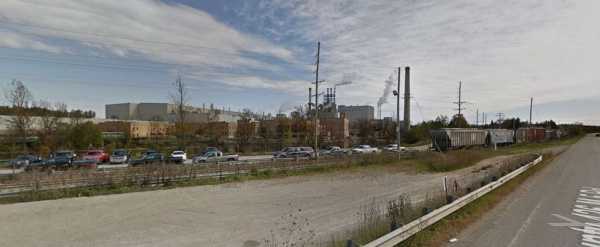Nearly 100 cases of a rare, fungal infection have been linked to a Michigan paper mill.
Public Health Delta & Menominee Counties (PHDM) said 19 cases of blastomycosis have been confirmed while another 74 are suspected.
The department was notified about the first cases on Feb. 28 among workers with Escanaba Billerud Paper Mill on the Upper Peninsula of Michigan.
"The health and safety of our Escanaba employees is our first priority," Brian Peterson, vice president of operation at the mill, said in a statement. "Although the source of the infection has not been established, we continue to take this matter very seriously and are following recommendations from health and government officials."
MORE: Potentially deadly fungus spreading rapidly in US health care facilities
Public Health Officer Michael Snyder told ABC News the health department sees a few cases of the infection every year but rarely an outbreak of this magnitude.
Here's what you need to know about blastomycosis and how it can be treated:
What is blastomycosis?
Blastomycosis is a fungal infection caused by a group of fungi known as Blastomyces.
"These are fungi that live in the environment as a mold and they make spores," Dr. Teresa O'Meara, an assistant professor of microbiology and immunology at the University of Michigan, told ABC News. "And what happens is that when people inhale too many of those spores, they can sort of set up and evade some of these innate immune responses and cause pneumonia and spread throughout the body."

A Google Maps screenshot of Escanaba Billerud Paper Mill in Michigan.Google Maps
The fungi are found in the environment, mainly in moist soil and in decomposing organic material such as wood and leaves, according to the Centers for Disease Control and Prevention.
Most cases of the infection occur in the United States and Canada but are very rare, with the annual incidence being about one to two cases per 100,000 people, the CDC said.
In the U.S., O'Meara said blastomycosis is most common in eastern parts of the Midwest — including states like Michigan, Minnesota and Wisconsin — the Great Lakes region and Southwest.
"On average over the past five years, only 26 cases have been reported for the entire state of Michigan annually," PHDM said in a release. "However, the Upper Peninsula of Michigan is a known risk area for blastomycosis infection."
The infection is not transmitted from person to person or from animals to people and can only be contracted by breathing in the microscopic spores, often after activity that disrupts the soil or the decomposing material.
What are the symptoms?
Symptoms can be wide-ranging, O'Meara said. Some patients are asymptomatic while others develop symptoms including coughing, fever, chest pain, muscles aches and fatigue.
MORE: Drug-resistant strain of Shigella bacteria prompts warning from CDC
Because symptoms resemble other types of infections, it can be hard to diagnose the illness in a person, O'Meara said.
"And so diagnosis is pretty hard, even in places where it's endemic, just because it's so rare," she said.
O'Meara added that evidence suggests symptoms can appear anywhere from three weeks to three months after inhaling spores.
According to the CDC, the infection can spread from the lungs to other areas of the body, including the joints, bones, brain and spinal cord among those who are immunocompromised.
Which treatments are available?
Those are infected with blastomycosis needed to be treated with a prescription antifungal medication.
Those with mild to moderate cases can take a medication known as itraconazole, which stops the growth of fungi.

Blastomyces dermatitidis fungi, the causative agent of the disease blastomycosis affecting lungs, more rarely skin, bones, other organs.STOCK PHOTO/Getty Images
Patients with severe infections are usually given amphotericin B, an intravenous medication. Because it can have a wide range of side effects, it's only given to critically ill patients or those who are immunocompromised.
Treatment can range from six months to a year and can depend on how severe a person's infection is as well as the strength of their immune system.
"One of the really important problems I would like to highlight just for people to know is that we often think about antibiotic resistance as being a real problem," O'Meara said. "But there's actually dozens of classes of antibiotics and antifungals. There's only three classes of antifungals available."
She continued, "And so this is going to be a big problem going forward just because there are more and more fungal infections that are on the rise and we need to develop new antifungal treatments."
Is blastomycosis deadly?
It is very rare for blastomycosis to result in death. According to the CDC, there have been 1,216 blastomycosis-related deaths between 1990 and 2010.
What's more, the age-adjusted mortality rate is 0.21 per 1 million person-years, the federal health agency said.
MORE: Superbugs are a leading global health risk: UN report
How can I protect myself?
Because there is no vaccine and it is endemic in some environments, it may be hard to protect yourself against the fungus.
If you work in areas where the fungi is prevalent or you might disturb soil, O'Meara said you can consider wearing protective equipment.
If you think you've been exposed, get tested and — if positive — start antifungal treatment if needed.
Sourse: abcnews.go.com






